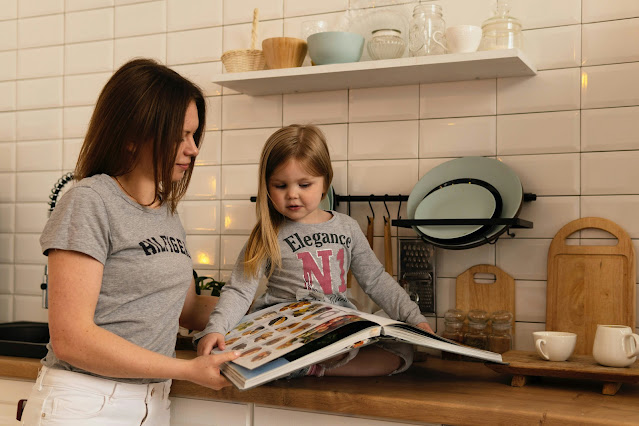 |
| Image Credit: Unsplash |
{This is a collaborative post}
Have you ever considered the kitchen to be the perfect classroom for your kids? It’s not just about stirring and mixing; it’s an opportunity to teach valuable life skills and instil healthy eating habits. Today, let's explore how seafood can be a fun and nutritious part of your child's diet, with a focus on understanding quantities like "how many scallops in a pound".
Starting Simple
Introducing children to cooking can be a delightful exploration, particularly with dishes that are simple and fun. Seafood is not only nutritious but also highly adaptable for young chefs. For those just beginning, it's best to choose recipes with few steps and minimal cooking requirements, such as baking or assembling, which are safer and still incredibly satisfying.
No-Cook Seafood Starters
Starting with a no-cook recipe can significantly reduce the stress of introducing children to the kitchen. A simple seafood salad, for example, can be an excellent first dish. Children can easily mix pre-cooked shrimp with various dressings and their choice of colourful vegetables. This activity is not only safe, as it avoids using the stove, but it also helps children understand mixing and matching flavours, fostering creativity without the dangers of heat.
Creative Wraps for Little Hands
Children can lay out soft tortillas and top them with ingredients like flaked salmon or tuna, which are easy to prepare and handle. Add-ins might include lettuce, diced tomatoes, or a mild dressing. Wraps can be rolled up for a mess-free, fun experience that also teaches kids about balancing flavours and nutrition. This no-cook option keeps everything safe and straightforward, allowing even the youngest chefs to participate fully in the meal preparation process.
Hands-On with Seafood
Encouraging children to get their hands dirty can transform cooking from a chore into an exciting activity. Simple, tactile tasks like assembling fish tacos or skewering shrimp for grilling are not only fun but are educational opportunities that enhance fine motor skills and teach kitchen safety.
Creating Mini Chefs
Scallop skewers are a fantastic way to involve children more deeply in cooking seafood. By counting and preparing scallops for skewers, children can learn about portions and quantities—such as estimating how many scallops in a pound, which typically ranges from 20 to 25. This teaches them about planning and preparation, important skills for any aspiring chef.
Fish Patty Preparation
Kids can mix together ground fish like salmon or white fish with breadcrumbs, herbs, and a bit of egg to bind everything together. They can then shape the mixture into small patties, which is a great way for them to practice their motor skills and learn about forming consistent sizes and shapes. This task not only teaches them about the texture and handling of different seafood but also about the cooking process as they watch the patties turn golden and crispy on a pan or grill. This experience emphasizes the joy of creating and the satisfaction of tasting their own culinary creations.
The Nutritional Angle
When children understand the health benefits of the foodsthey prepare, they’re more likely to enjoy eating them. Seafood, rich in essential nutrients like omega-3 fatty acids, plays a crucial role in brain development and overall health.
Fun Fact Time
Integrating fun facts into the cooking process can make the experience more engaging for children. For instance, sharing that scallops are not only tasty but also packed with protein and low in fat can pique their interest. Teaching them about the nutritional value and explaining how many scallops in a pound they're using can help them connect the concepts of nutrition and measurement, reinforcing their learning and excitement about seafood.
Seafood Safety First
Before diving into the delights of cooking, it's crucial to talk about safety, especially when handling seafood, which can be a bit different from other foods. This section will equip both you and your little chefs with the necessary know-how to handle seafood safely, ensuring a fun and healthy cooking experience.
Understanding Seafood Safety
Teach your children the basics of seafood safety, like the importance of washing their hands before and after handling seafood. Discuss how to tell if seafood is fresh and safe to eat, and why it’s important to keep it refrigerated until it’s ready to cook.
Practical Tips for Safe Preparation
Involve your children in checking the 'sell by' dates on packages and let them help in storing seafood properly once you're home. Explain why we cook seafood thoroughly and how to check if it's done. For instance, scallops should be milky white or opaque and firm to the touch. Including these practices not only educates them about safety but also makes them feel like a crucial part of the cooking process.
Bringing It All Together
In wrapping up, involving kids in cooking seafood can be a delightful way to bond, learn, and nurture a lifetime of healthy eating habits. From understanding the nutrition in seafood to learning practical skills like measuring quantities—every moment is an educational journey. Next time you’re in the kitchen, ask your little one, "How many scallops do you think we need today?" and watch their excitement in learning and cooking grow!







